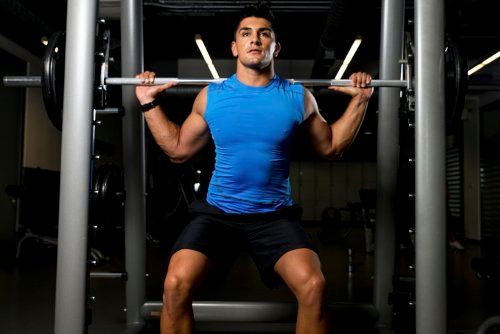New Supplement Addresses Myostatin, a Chemical in Body that Impedes Muscle Growth, Firm Says
In a clinical study, the ingredient Fortetropin was shown to reduce serum myostatin levels while increasing muscle size and mass.
Photo © iStockphoto.com/Ibrakovic

Myos Rens Technology (Cedar Knolls, NJ) has announced its new Qurr product line, the main ingredient of which is its proprietary ingredient Fortetropin. Fortetropin is a bioactive proteo-lipid complex developed from fertilized egg yolk, Myos Rens says. It is also the first all-natural ingredient available for reducing levels of myostatin, a chemical in the body said to hinder muscle growth. In a clinical study published in the Journal of the American College of Nutrition,1 Fortetropin was shown to reduce serum myostatin levels while increasing muscle size and mass. According to the study, myostatin, or myokine, is a protein that acts on muscle cells’ autocrine function to inhibit muscle cell growth and differentiation (myogenesis), which can lead to protein breakdown and inhibit protein synthesis.
The effects of Fortetropin were examined in two separate studies, conducted on behalf of Myos Rens. In the first, preclinical study, researchers sought to determine whether Fortetropin could reduce levels of myostatin in a rodent model. The researchers found, through examination of the animals’ gene and protein expression after supplementation and stimulated exercise, that Fortetropin did significantly reduce levels of myostatin.
The second, double-blind, placebo-controlled study was conducted using 37 resistance-trained individuals between the ages of 18 and 21. Specifically, the researchers’ aims were 1) to determine the mechanism of action of Fortetropin supplementation, and 2) to evaluate its effect on skeletal muscle growth in a human study. Prior to supplementation, the researchers collected measurements of existing serum myostatin levels, muscle thickness, body composition, strength, and power. Subjects were randomized into three groups and given either 6.6 g of Fortetropin, 19.8 g of Fortetropin, or a placebo. Groups were matched on the basis of muscle thickness, lean body mass, fat mass, and strength, and then randomly assigned to one of those conditions.
The study was conducted over a period of 12 weeks, with two days specified each week for participants to complete the training protocol. One day consisted of muscle hypertrophy (growth of the size of muscle cells), and the other day involved strength-training exercises. Each group was instructed to perform the same exercises, and all subjects were prohibited from consuming eggs for the duration of the study. Participants’ strength was assessed via one repetition maximum testing (1RM) in leg and bench press exercises, after which subjects completed two sets of warmup activities. Following warmup, subjects were instructed to attempt to repeat their 1RM load, and were given as many as five attempts to do so. Anaerobic power was measured with the Monark Wingate cycle test.
Ultimately, the study authors found that both groups supplemented with Fortetropin had increased lean body mass and muscle thickness, while levels of serum myostatin were significantly decreased compared to the control group. There was no significant difference observed in the results of the 6.6-g group versus the 19.8-g group. The researchers also note that future research on the underlying mechanism of the study results may show Fortetropin’s potential use for other populations susceptible to muscle loss, such as those with sarcopenia.
Fortetropin is safe and all-natural, according to Myos Rens, and no adverse events were recorded in the study. The full Qurr product line targets three demographics: Qurr Well, for aging adults; Qurr Toned for lean muscle; and Qurr Strong for athletes looking to maximize workout performance and build muscle.
References:
- Sharp MH et al. “The effects of Fortetropin supplementation on body composition, strength, and power in humans and mechanism of action in a rodent model.” Journal of the American College of Nutrition, vol. 35, no. 8 (June 2016): 679-691









